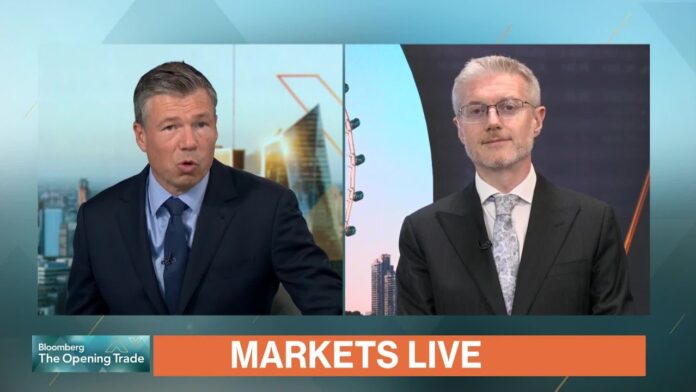Paul Dobson, Guy Johnson, and Kriti Gupta discuss market trends, economic indicators, and investment strategies on “Bloomberg,” emphasizing China’s new stimulus measures aimed at reviving growth amid challenges like a sluggish real estate sector.
Expert Financial Analysis on Bloomberg
Paul Dobson, Guy Johnson, and Kriti Gupta delve into key themes for analysts and investors on Bloomberg. They provide insights into notable market trends, economic indicators, and investment strategies, aiding listeners in navigating the current financial landscape. Their analysis highlights critical factors influencing market performance and potential future developments.
Market Snapshot: Traders Assess China’s Stimulus Initiatives
The Chinese government has introduced measures to boost growth amid challenges, such as a sluggish real estate sector and geopolitical tensions. Analysts note that the success of these initiatives depends on timely implementation and confidence-building. In response, stock markets in Asia and beyond are cautiously optimistic, reflecting uncertainties about the long-term sustainability of these measures. As investors consider China’s plans, market volatility is expected to persist, given the significant global economic impact. Traders will continue adapting their strategies as new information emerges.
Investors globally have turned their eyes toward China, examining the effectiveness of recent stimulus measures aimed at rejuvenating the nation’s slowing economy. In recent months, Chinese authorities have unveiled a series of initiatives ranging from fiscal policies to monetary easing, striving to inject vitality into a landscape hampered by sluggish growth and mounting debt concerns.
At the forefront of these measures are policies to boost consumer spending and infrastructure investment. State-backed financial institutions have been encouraged to extend credit and refinance existing debts, while the central bank has cut reserve requirements, aiming to increase liquidity in the financial system. Additionally, tax breaks and subsidies have been introduced to spur business activity and consumer purchases, reflecting a broader strategy to pivot from an export-driven model to a consumption-led growth paradigm.
Markets have greeted these announcements with cautious optimism. The immediate reactions saw a moderate uptick in Chinese stock indices and a stabilization of the yuan, reflecting initial confidence in policymakers’ ability to counteract economic headwinds. However, a deeper dive into market sentiments reveals a veneer of skepticism. Traders and analysts remain wary of the underlying challenges, such as the nation’s real estate woes and the high levels of corporate and local government debt. These structural issues may dilute the impact of the stimulus and lead to a more protracted recovery process.
Moreover, global markets are keeping a watchful eye on how these initiatives affect international trade dynamics. U.S. and European markets, still grappling with their own economic uncertainties, are evaluating the potential ripple effects from any significant shift in Chinese economic policy. The Biden administration, in particular, is monitoring whether increased Chinese demand could alleviate some global supply chain pressures, despite ongoing geopolitical frictions.
Overall, while China’s stimulus measures showcase its government’s commitment to stabilizing the economy, the real test lies in their ability to translate these policies into sustainable growth. Market participants are adopting a wait-and-see approach, seeking tangible proof of enduring economic recuperation amidst the short-term market fluctuations.
Source : Market Snapshot: Traders Assess China’s Stimulus Initiatives


